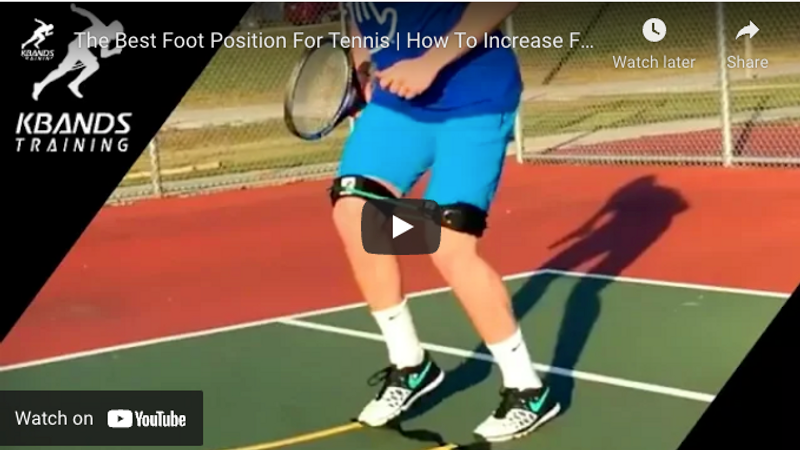How To Get Your Feet In The Right Position For A Tennis Forehand and Backhand
If you need to improve on the tennis court then an analysis of your footwork may be necessary. Struggling to get to shots near the sidelines can be improved with agility drills. Stream the video below and take notes of the athlete as he drives his knees through the resistance of Kbands. Each movement will build strength and speed, in addition to, quicker lateral moves through a speed and agility ladder. Notice, as the athlete gets through the ladder, he will complete a forehand and or backhand. Let’s take a look at the drill.
Why Is Movement Necessary To Be A Great Tennis Player
This seems to have an obvious answer. You need to be able to move around the court quickly to return an opponents shot. Many athletes forget that quick feet can help them get into a better position for a returning forehand or backhand. Combine agility drills like this one with your skills specific training, and you’ll see great improvements in your performance.
What Is A Forehand And Backhand
If you are a beginner to tennis, a forehand is win a tennis player approaches a shot in an open stance. If the tennis player is left-handed, the tennis ball will be on the left side of the athlete’s body. If the ball is on the right side of the body, then the return shot is considered a backhand. These two different shots can be very effective if done correctly. As many beginners will find, the backhand can be more difficult than forehand. To limit the amount of things to think about during this drill we have have selected to complete dry swings so that your focus can remain on your footwork. You can increase your foot speed while working on getting your legs in the proper position for each of the shots.
Is Footwork Really That Important To Train On It’s Own
The first time you do this drill you may want to turn your shoulders towards the direction that you are moving, resist the temptation. Keep your hips and shoulders straight at the net. This will help you build lateral quickness with Kbands through the speed and agility ladder. Your legs will burn as you increase the repetitions. You will also notice when setting up for the forehand and backhand, that your legs will be under stress as you take your dry swing. Anytime that you are in the athletic position, you will notice Kbands fire your hips. The glute activation will help your body stay in proper alignment as you swing through the ball.
Please let us know if you have any questions on how to complete this drill properly in the comments below. If you do not have any questions we offer a variety of speed and agility drills here in the tennis training section for free. Enjoy the workouts!

